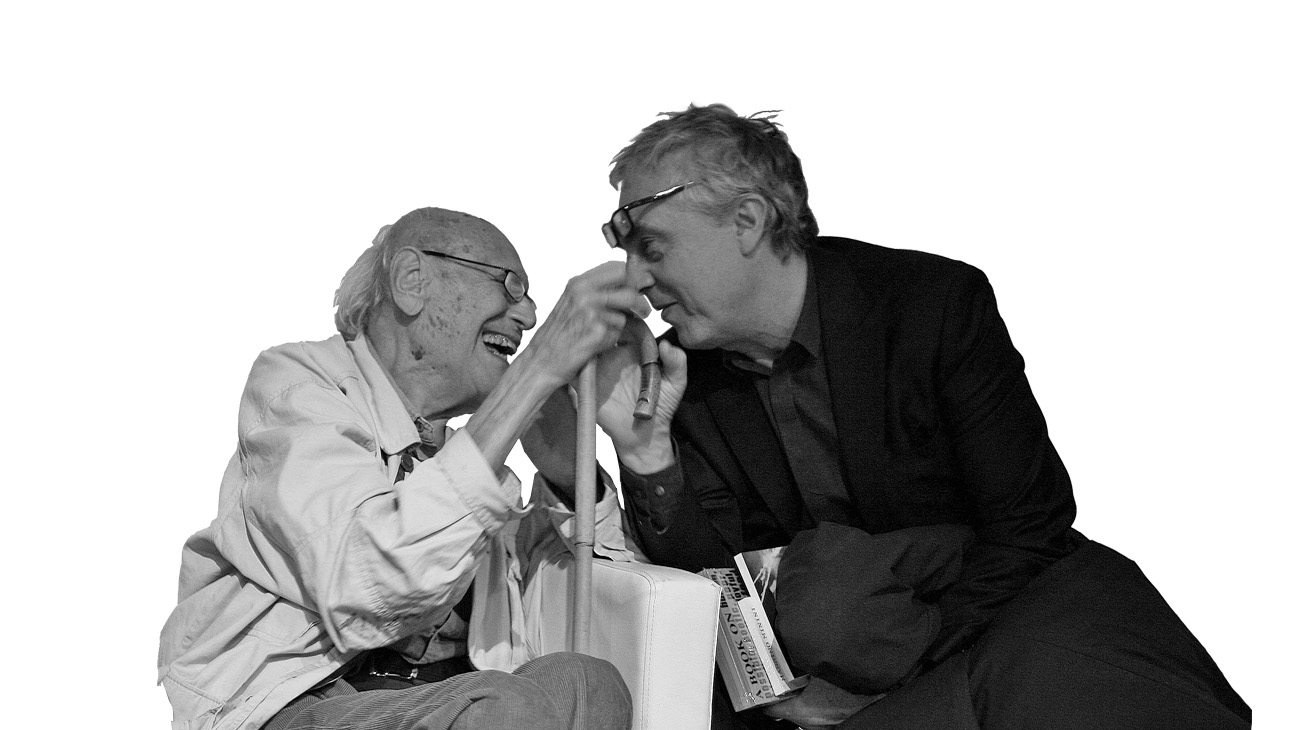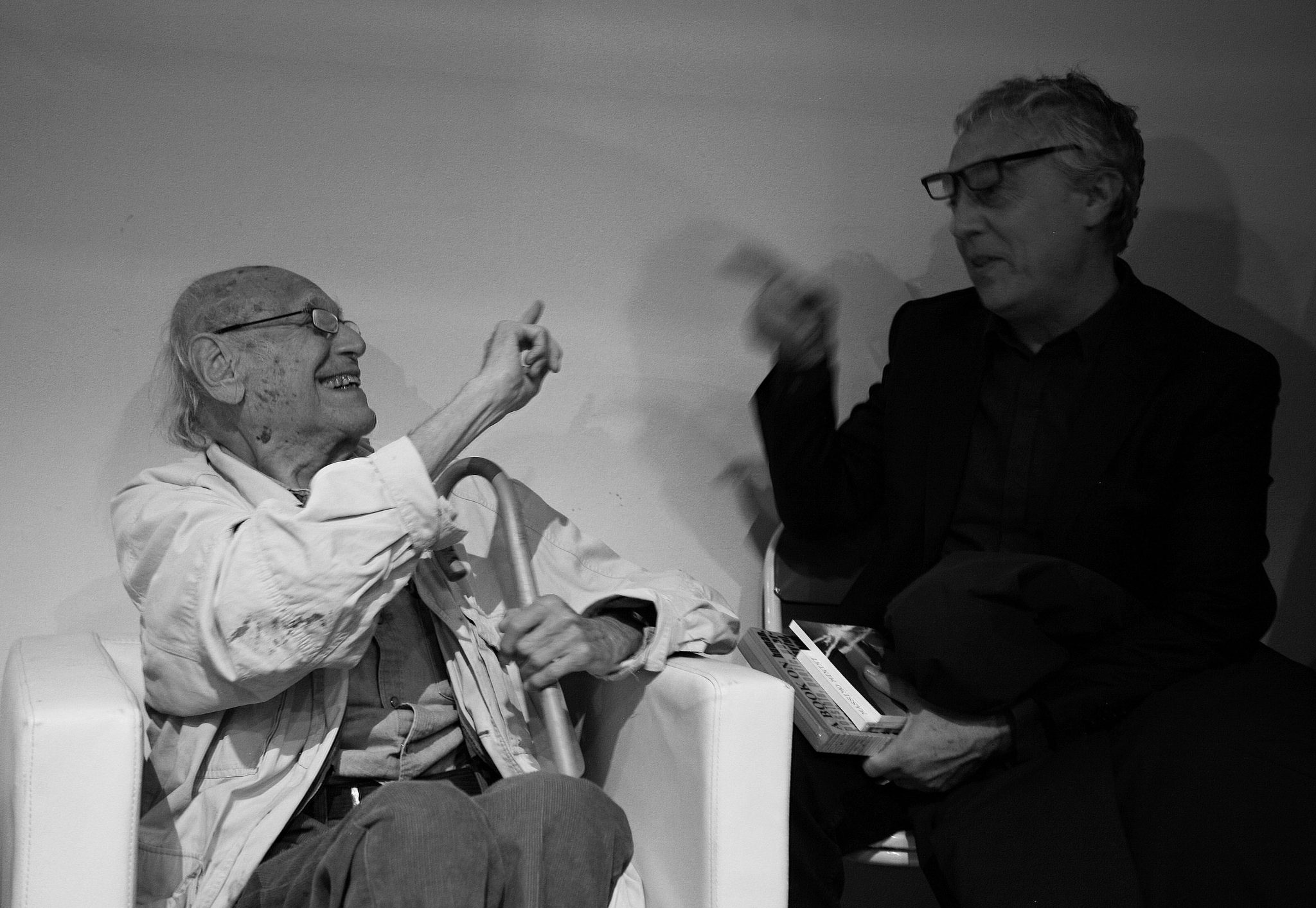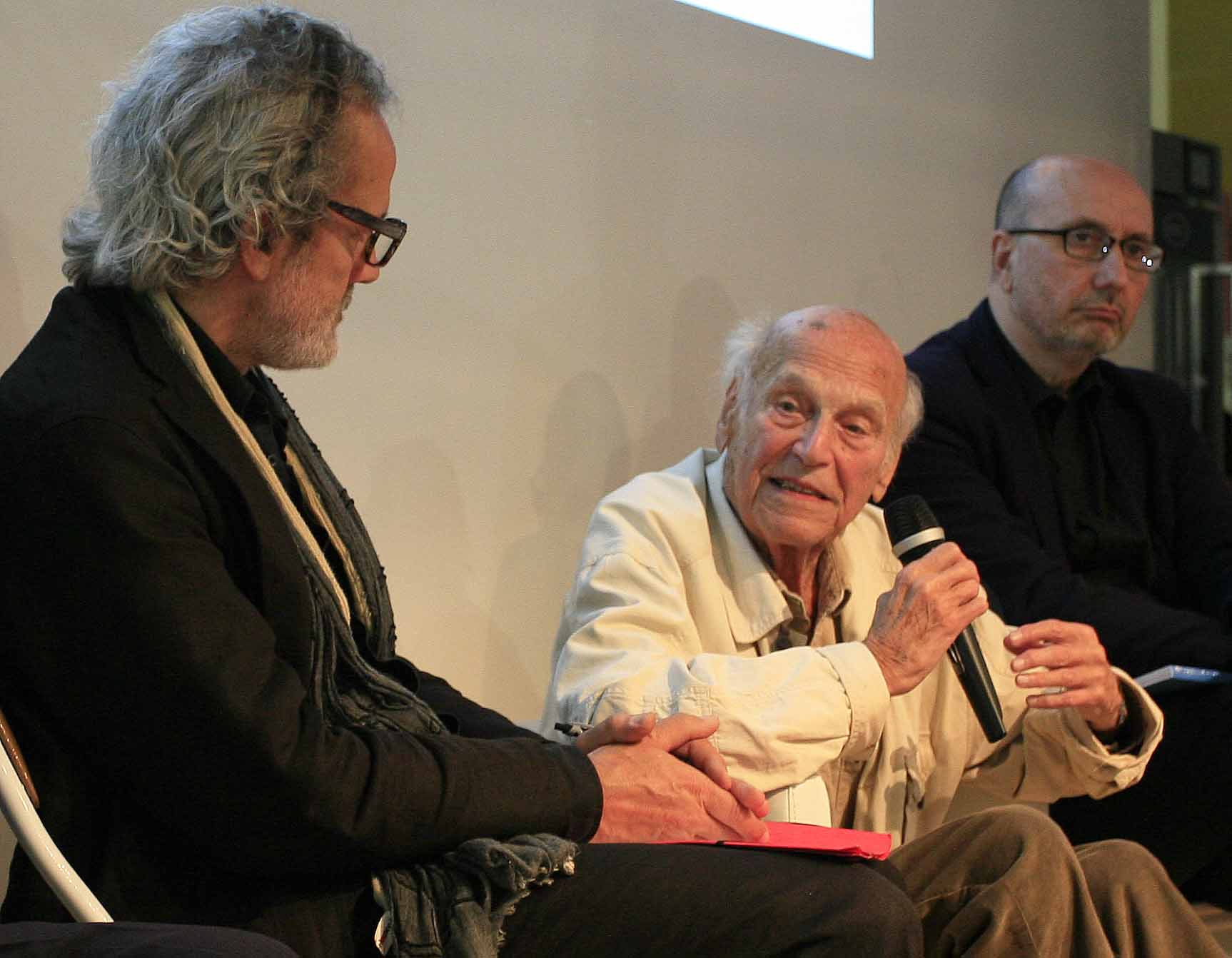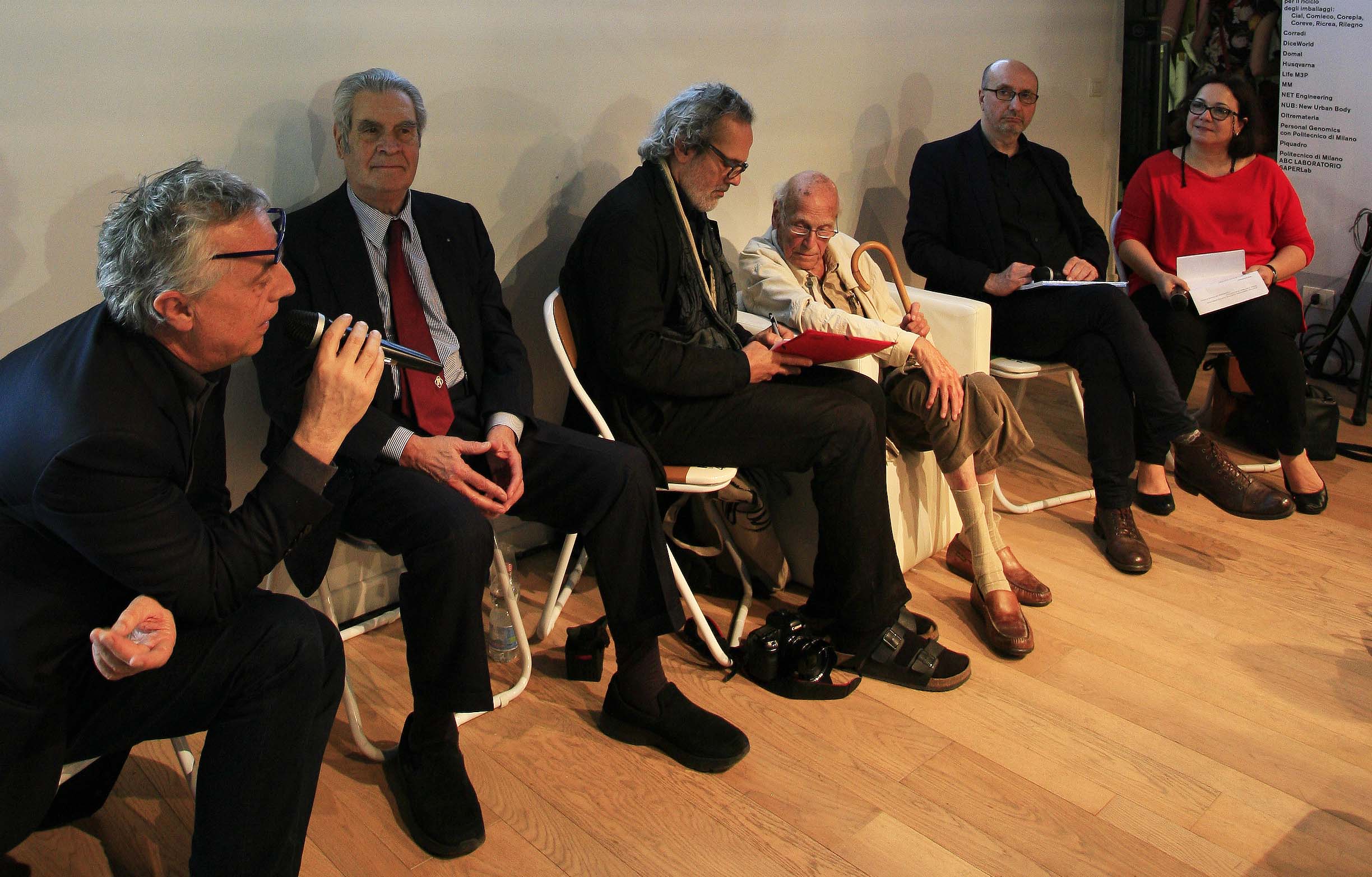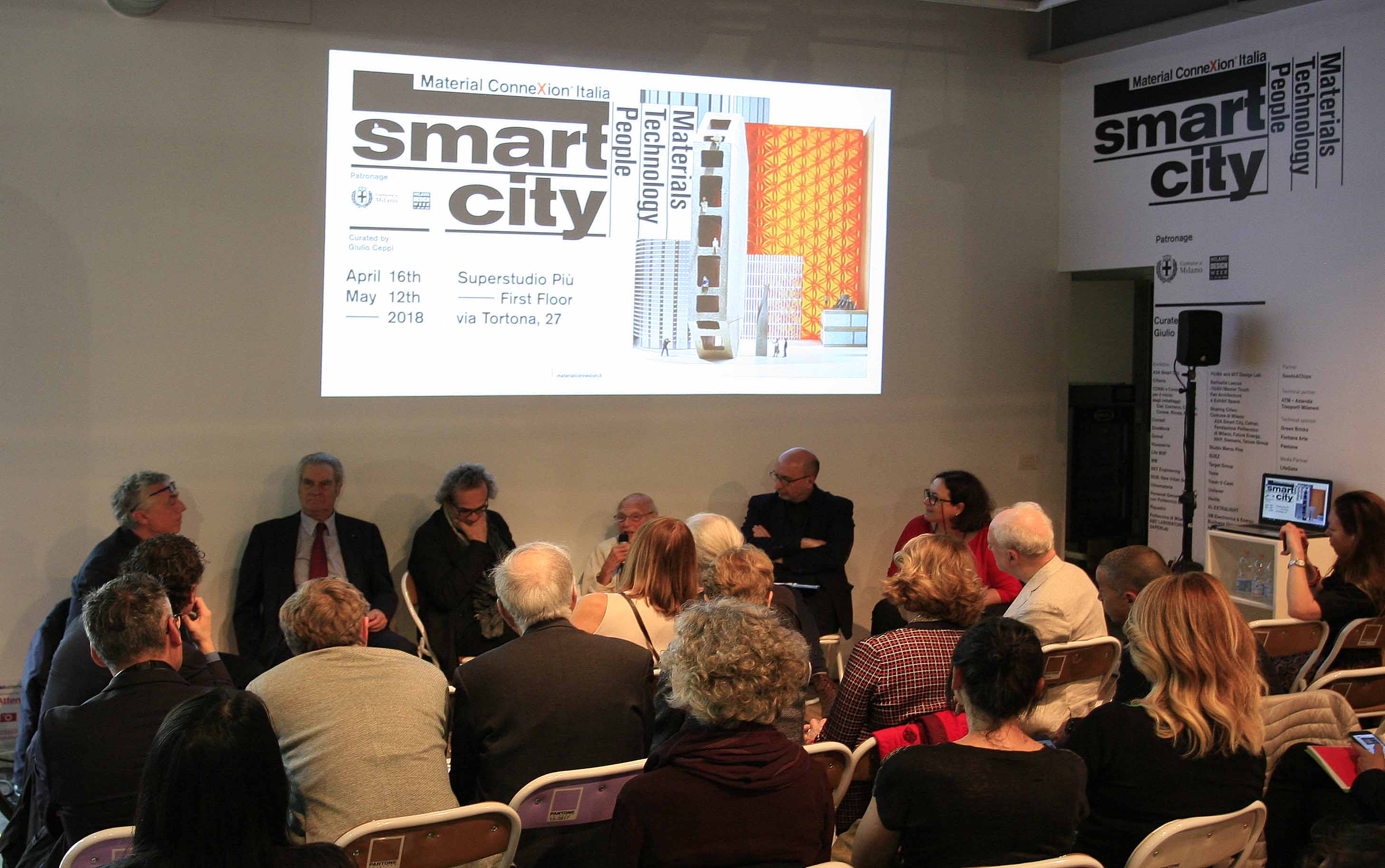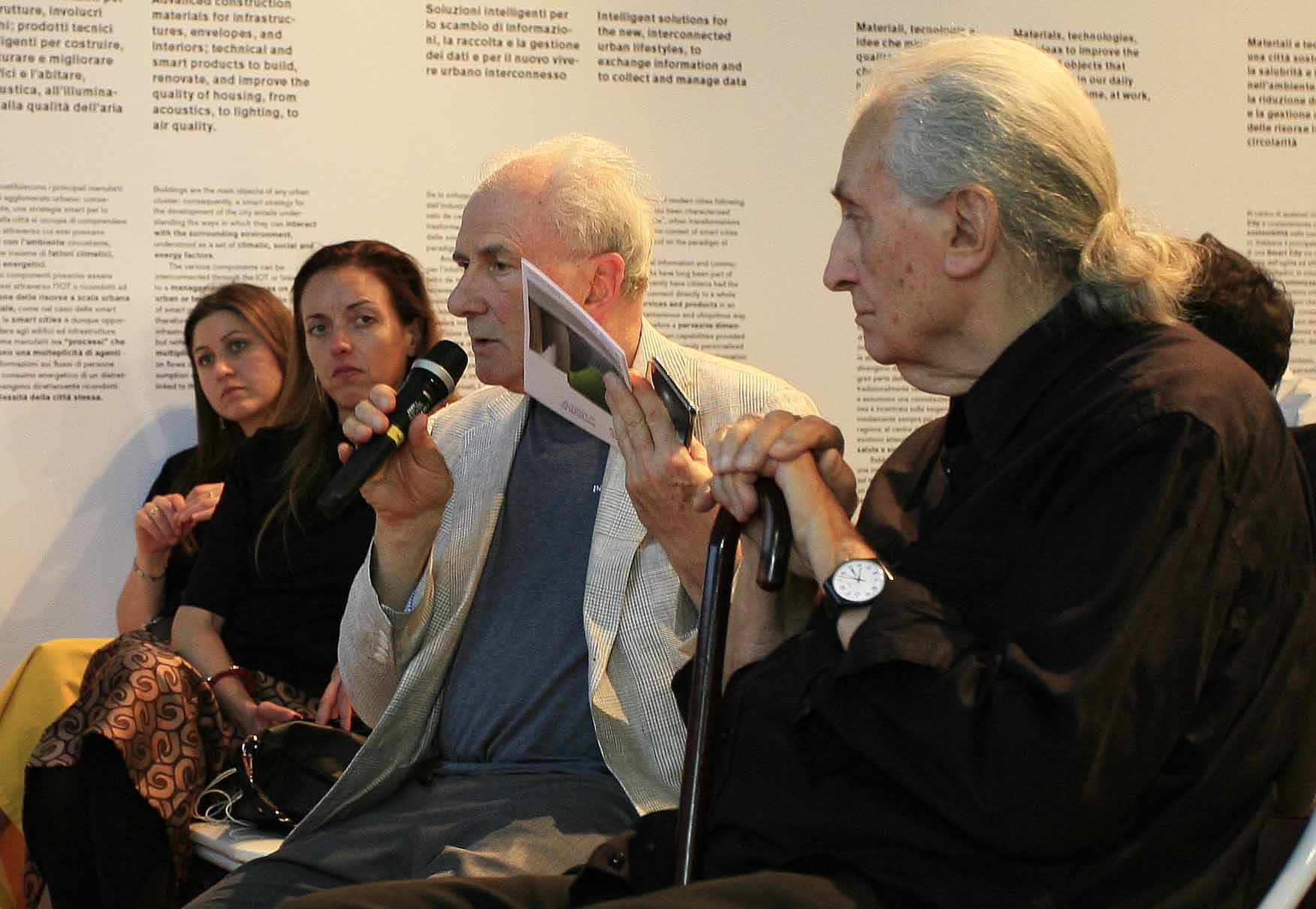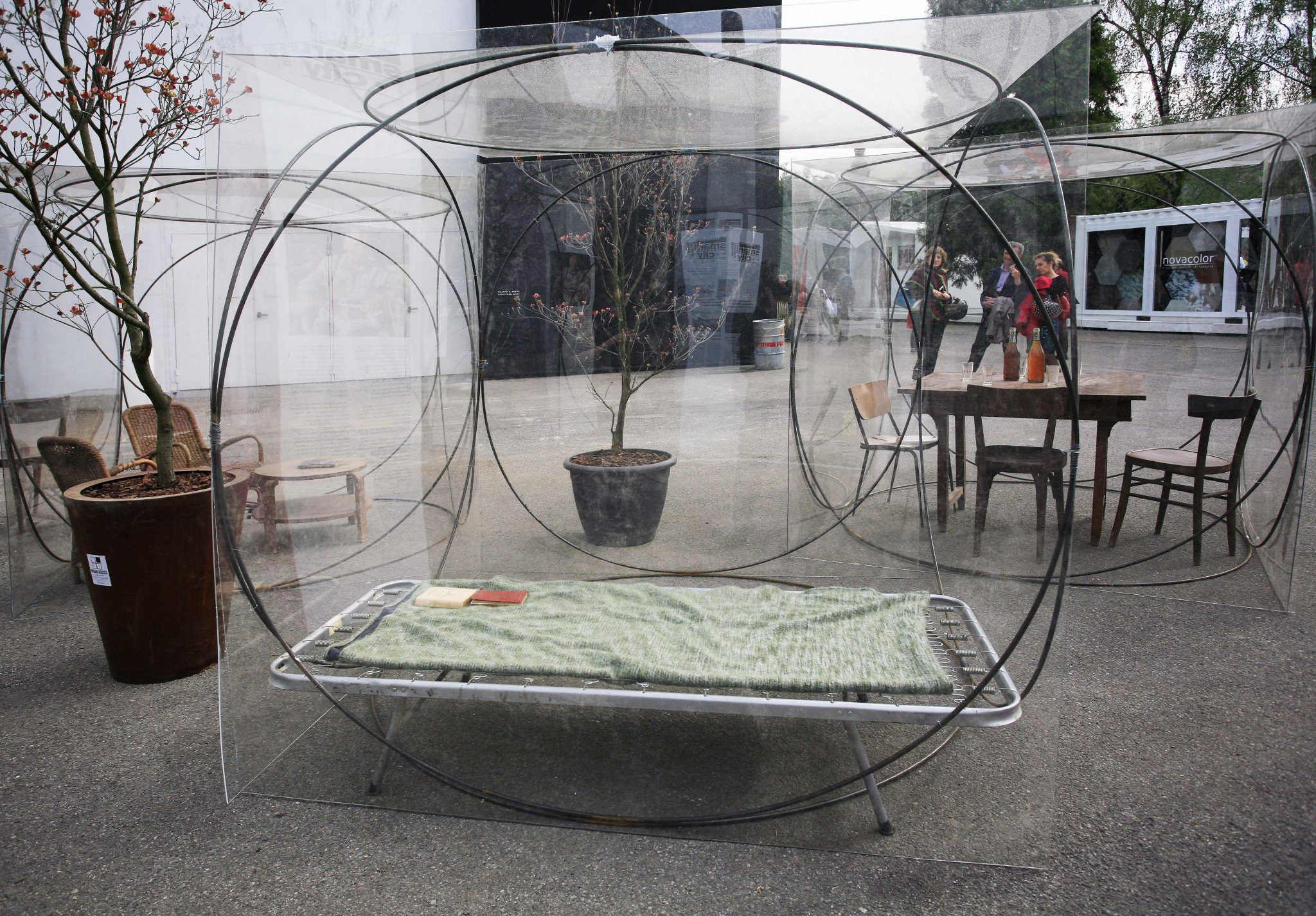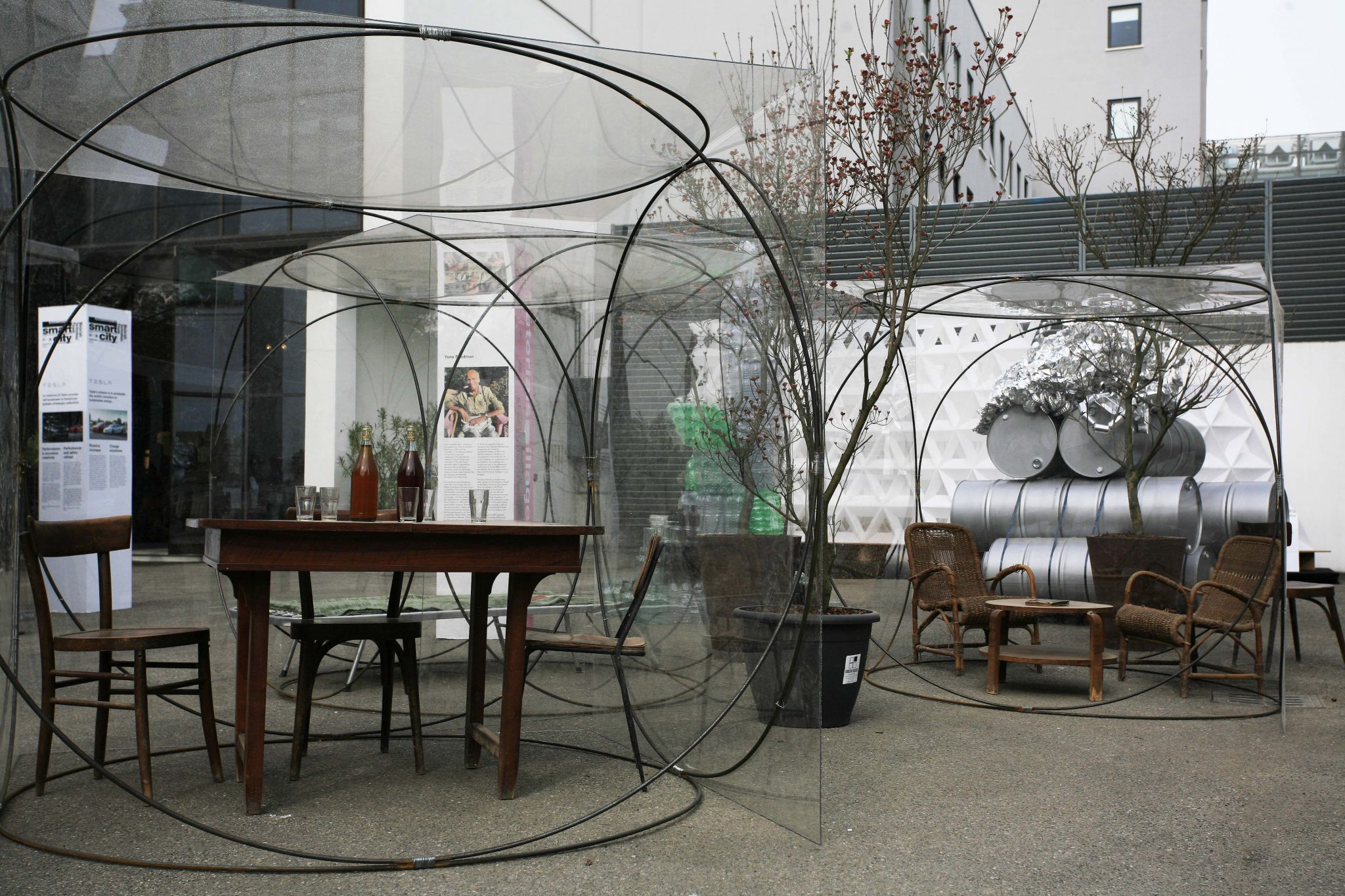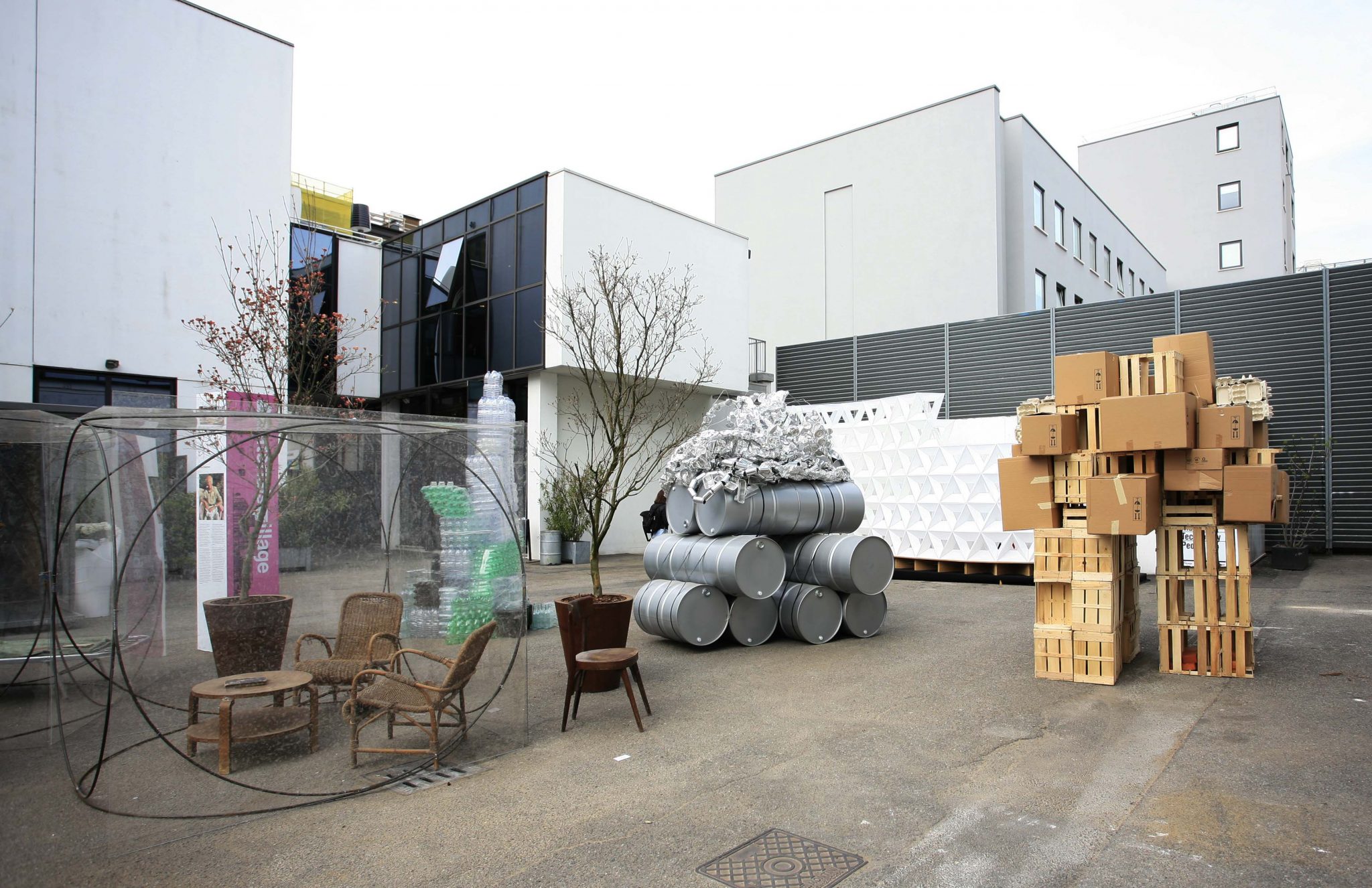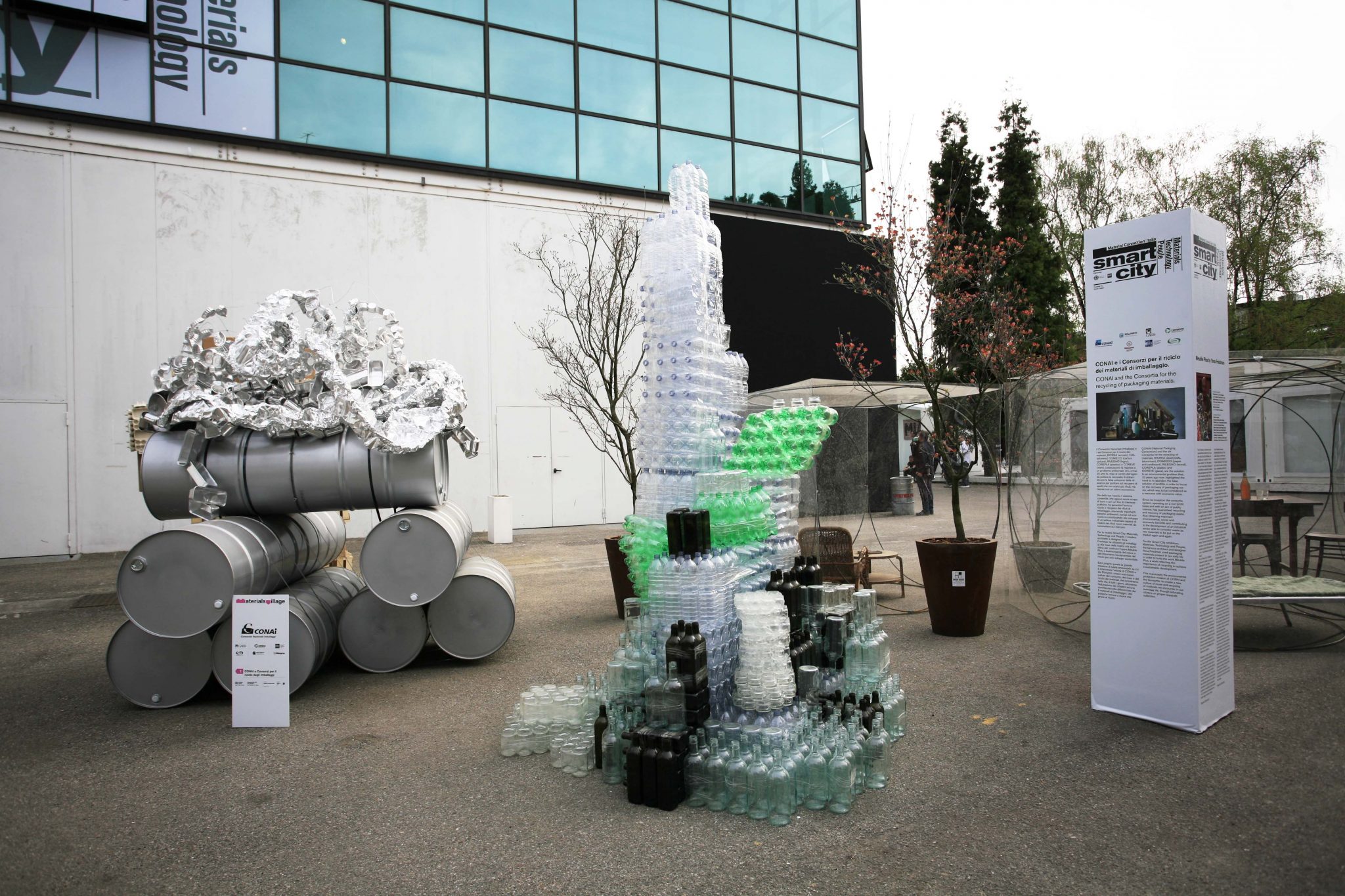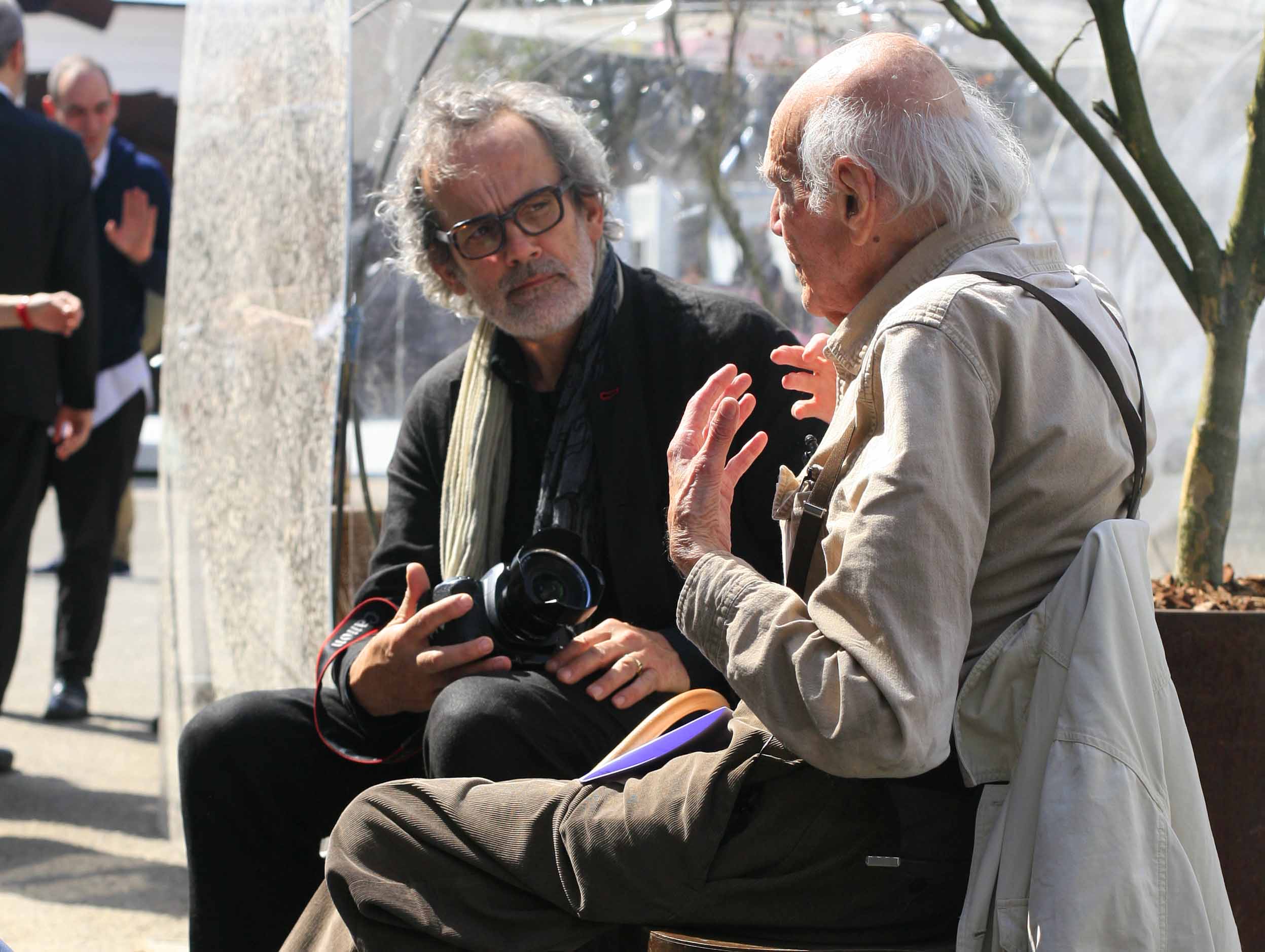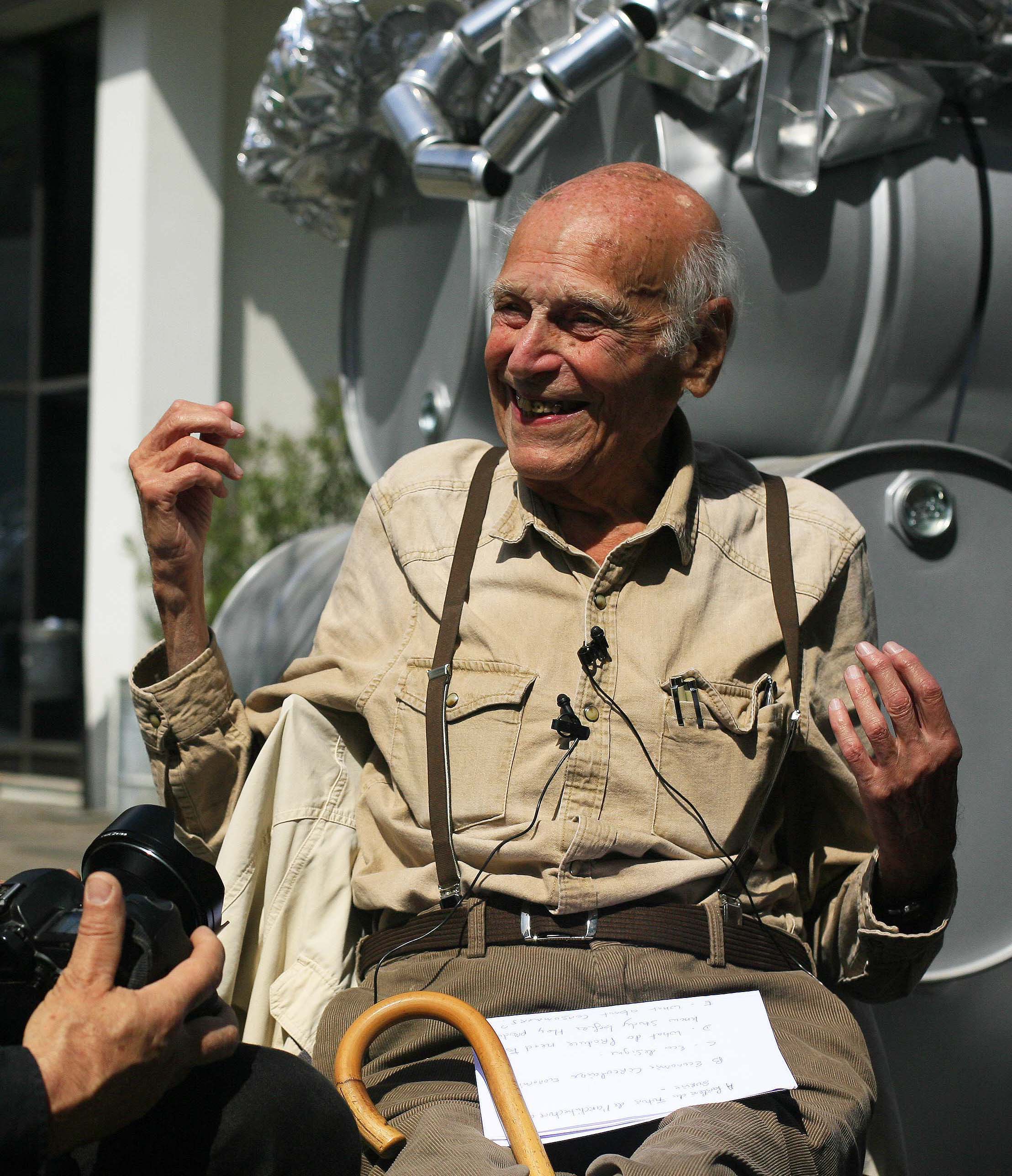The exhibition “Smart City: Materials, Technology & People“ has been inaugurated for Milan Design Week 2018 . Conceived and organized by Material ConneXion Italia, curateded by the architect Giulio Ceppi and promoted by the Municipality of Milan, the exhibition aims to stimulate ideas and debates on the theme of the Smart City – the smart city model we frequently talk about nowadays – taking on a new point of view: this time, in fact, the starting point are the inhabitants or “smart citizens”, tomorrow’s active citizens, engines of change in the cities of the future, able to meet the challenges dictated by the ongoing global transformations.
“Smart City: Materials, Technology & People” opened on Monday, April 16th with a dialogue between Yona Friedman and Stefano Boeri, with Maurizio Bortolotti, moderated by Silvia Botti.
The exhibition’s concept has been developed starting from the analysis of the global challenges that all of us have in common as inhabitants of the same Planet: from the need of new approaches to the preservation of the ecosystem to revolutionary themes such as crowdfunding, sharing economy and 3D printing; from the security and protection of data and people to the need to feed the population and redesign the city-country relationship, to the management of the progressive increase of average age in the world and sustainable welfare. If the direction we are going towards, among sensor networks and databases, energy consumption and complex infrastructures, is to become digital citizens in increasingly connected metropolises, then how do our needs and the urban scenarios evolve? The exhibition becomes a point of reference to reflect at 360° on how we will live in a not so distant future as citizens who do not respond only to external inputs, but become the protagonists of the process of collecting and sharing data. Walking through the various exhibiting modules, the public will have a chance to discover material and technological solutions in the various areas that characterize the Smart Cities and contain the most significant changes. Starting from these reflections, the exhibition has been divided into 6 thematic areas: Advanced Building and Infrastructures, which exposes advanced building materials for infrastructures, casings and interiors as well as products for building, renovating and improving buildings and living, from acoustic lighting; Connected City, an area that offers solutions for the exchange of information, data collection and management and the new interconnected lifestyle; Smart living, Smart People, which collects ideas to improve the quality of the objects that surround us in areas such as our home, the office and outdoor spaces; Sustainable and Circular City, which focuses on technologies that work on reducing consumption, managing waste and resources with a view to circularity; Integrated Mobility which focuses on materials to support new mobility, from car / bike sharing to the revival of public transport and, finally, Food Policies and Urban Agriculture, which analyzes solutions for a more sustainable approach to nutrition and the integration of green spaces in the cities.
In parallel to “Smart City: Materials, Technology & People”, a series of meetings, workshops, conferences and events have been scheduled.
YONA FRIEDMAN: A SUSTAINABLE PROJECT FOR THE “SMART CITY”.
With CONAI and Consorzi di filiera for the recycling of packaging waste
Curated by Maurizio Bortolotti.
Yona Friedman became internationally famous for his radical ideas on architecture, especially for the concepts of “mobile architecture” and “space city” and for his ideas for developing a sustainable architecture, based on the participation of the inhabitants in the realization of the city. His concept of architecture, that inspired generations of architects, has recently focused on the use of elementary structures, based on a wide range of construction modules and open to the use of simple and recyclable materials.
For the exhibition Smart City: Materials, Technology and People organized by Material ConneXion® Italia, Friedman has developed a project that summarizes his ideas on the reuse of waste and recycled materials. Since the early seventies, when the need for a contemporary civilization that could no longer be based on the waste of raw materials and basic materials began to grow, Friedman theorized in his work the reuse of materials, especially starting from his vision of a ‘”Survival architecture”.
For the Smart City exhibition: Materials, Technology and People, Friedman has created a “site specific” project in the entrance courtyard of Superstudio Più, in collaboration with CONAI and supply chain consortiums. In the project the six basic materials of the packaging of our daily life, plastic, steel, aluminum, paper and cardboard, wood and glass, today at the center of all recycling projects, are used to realize some of its architectural concepts through elementary geometric shapes .
According to Friedman, architecture must respond to the basic needs of man and must be balanced with a harmonious life within a community. It should therefore be based on an idea of communication. In this idea of a “communication architecture” the recyclable materials are communicative as they can be reused in a virtually endless process to build and reshape the environment where we live.
Friedman shows us how to produce new architectural concepts with the use of these materials for a type of habitat based on sustainability. For a planet increasingly subject to major changes in the environment, the reuse of materials in the work of this great architect expresses with great punctuality the concepts that can guide the methods of construction and creation of the environment we want to live in today.
And this is precisely one of the missions of environmental protection on which the activity of CONAI and Consortia of the supply chain is based – Ricrea (steel), Cial (aluminum), Comieco (paper / cardboard), Rilegno (wood), Corepla (plastic) , Coreve (glass): the education of citizens to a correct separate collection of the 6 packaging materials, that can come back to life thanks to recycling.

